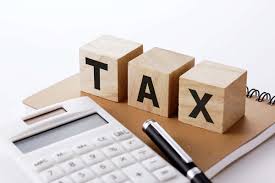Introduction to VAT
Introduction to VAT
What is VAT?
Value Added Tax (VAT) is a consumption tax levied on goods and services at each stage of production or distribution where value is added. It is ultimately borne by the consumer, while businesses act as intermediaries in collecting and remitting the tax to the government.
Origins and Global Adoption
VAT originated in France in the mid-20th century and has since been adopted by over 160 countries worldwide. Its popularity stems from its efficiency in generating revenue and its ability to provide a fair taxation system compared to traditional sales taxes.
How VAT Works
The VAT System Explained
VAT is calculated as a percentage of the sale price of goods or services. Businesses charge VAT to customers and pay it to suppliers. The difference between the collected and paid VAT is then remitted to the government.
Stages of VAT Collection
- Manufacturer Level: VAT is applied to raw materials.
- Distributor Level: VAT is charged on the sale of finished goods.
- Retail Level: VAT is included in the final price paid by consumers.
VAT vs. Sales Tax
Unlike a sales tax that is applied only at the point of sale to the consumer, VAT is collected at multiple stages of the supply chain. This makes VAT more transparent and less prone to evasion.
Benefits of VAT
Revenue Generation for Governments
VAT is a significant source of income for governments, funding public services such as healthcare, education, and infrastructure.
Transparency in Taxation
VAT systems maintain clear records at every stage of the supply chain, ensuring accountability and minimizing tax fraud.
Reduced Tax Evasion
By spreading tax collection across the supply chain, VAT makes it harder for businesses to underreport taxable income.
Challenges of Implementing VAT
Administrative Complexity
Managing VAT involves meticulous record-keeping, compliance with regulations, and timely submissions, which can be challenging for businesses.
Burden on Small Businesses
For small enterprises, the cost and effort of VAT compliance can be disproportionately high, impacting their profitability.
Potential Inflationary Effects
The introduction of VAT often leads to an increase in prices as businesses pass the cost onto consumers, which may contribute to inflation.
H2: VAT in the UAE and Other Countries
Introduction of VAT in the UAE
The UAE implemented VAT on January 1, 2018, at a standard rate of 5%. This move diversified government revenue sources, reducing reliance on oil.
Key Features of the UAE VAT System
- VAT applies to most goods and services, with some exemptions (e.g., healthcare, education).
- Businesses with annual turnover exceeding AED 375,000 must register for VAT.
- Regular VAT returns are mandatory for compliance.
Comparison with Global VAT Systems
While the UAE’s VAT rate is relatively low, other countries, like those in the European Union, have rates ranging from 15% to 27%, highlighting regional differences in taxation policies.
How Businesses Handle VAT
VAT Registration and Compliance
Businesses must register for VAT once they meet the required turnover threshold. Failure to do so can result in penalties.
Calculating and Filing VAT Returns
Businesses calculate VAT by offsetting input tax (VAT paid on purchases) against output tax (VAT charged on sales). Regular VAT returns must be filed to reconcile these amounts.
Input Tax Credit Explained
Businesses can claim input tax credits to reduce the overall VAT they pay, ensuring the tax burden only applies to the added value.
VAT for Consumers
How VAT Impacts Prices
Consumers bear the final cost of VAT, as businesses incorporate it into the sale price of goods and services.
VAT on Essential
Some governments apply lower VAT rates or exemptions to essential goods (e.g., food, medicines) to make them affordable, while luxury items often attract higher rates.
Common VAT Misconceptions
Is VAT the Same as Income Tax?
No, VAT is a consumption tax paid on purchases, while income tax is levied on an individual’s or business’s earnings.
Do Consumers Pay Double Taxes?
Consumers only pay VAT once at the point of purchase. However, the tax may seem cumulative as it is applied throughout the supply chain.
VAT Planning and Optimization
Strategies for Businesses to Manage VAT Efficiently
- Automating VAT calculations and filings using software.
- Keeping detailed records of all transactions.
- Engaging professional tax advisors for compliance.
Importance of Professional Advice
Navigating VAT regulations can be complex, especially for international transactions. Professional guidance ensures compliance and prevents penalties.
Future of VAT
Trends in VAT Policies Worldwide
Governments are increasingly adopting digital solutions like e-invoicing to enhance transparency and streamline VAT processes.
The Role of Technology in VAT Management
Automation tools and AI-driven platforms simplify VAT compliance, reducing errors and saving time for businesses.
Conclusion:
Value Added Tax (VAT) is a pivotal element of modern taxation systems, offering a transparent, efficient way to generate government revenue. While it presents challenges for businesses, strategic planning and local compliance support ensure its effective management. As VAT continues to evolve, embracing technology and professional expertise will remain essential for both businesses and governments.
FAQs:
What is the standard VAT rate in the UAE?
The UAE imposes a standard VAT rate of 5%.
Do all businesses need to register for VAT?
Only businesses with an annual turnover exceeding AED 375,000 are required to register for VAT in the UAE.
How does VAT differ from GST?
VAT and GST are similar; however, GST is typically a single tax levied at a national level, whereas VAT may involve multiple rates and regulations across regions.
Can VAT be claimed back by businesses?
Yes, businesses can claim input tax credits to offset VAT paid on purchases against VAT charged on sales.
What happens if a business fails to comply with VAT regulations?
Non-compliance can result in hefty fines, penalties, and potential legal consequences.
